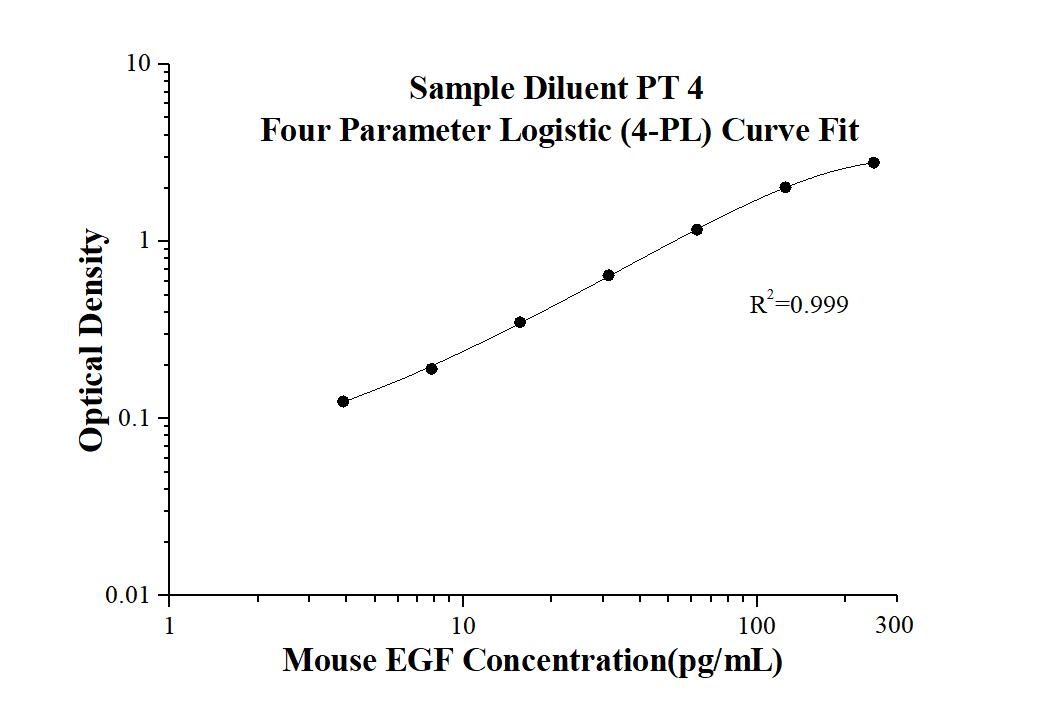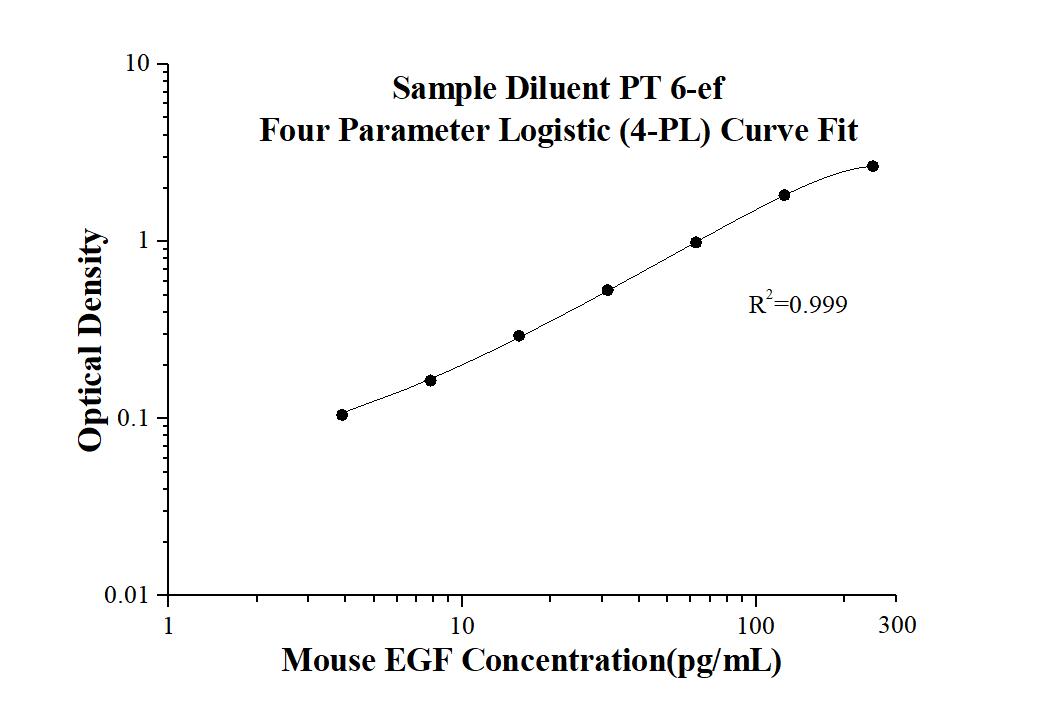Mouse EGF ELISA Kit
Sensitivity
0.7 pg/mL
Range
3.9-250 pg/mL
Reactivity
Mouse
Cat no : KE10093
Synonyms
AI790464, Egf, epidermal growth factor
Validation Data Gallery
Product Information
KE10093 is a solid phase sandwich Enzyme Linked-Immuno-Sorbent Assay (Sandwich ELISA). The mouse EGF ELISA kit is to be used to detect and quantify protein levels of endogenous mouse EGF. The assay recognizes mouse EGF. An antibody specific for mouse EGF has been pre-coated onto the microwells. The mouse EGF protein in samples is captured by the coated antibody after incubation. Following extensive washing, another antibody of biotinylated specific for mouse EGF is added to detect the captured mouse EGF protein. For signal development, Streptavidin-HRP is added, followed by Tetramethyl-benzidine (TMB) reagent. Solution containing sulfuric acid is used to stop color development and the color intensity which is proportional to the quantity of bound protein is measurable at 450 nm with the correction wavelength set at 630 nm.
| Product name | Mouse EGF ELISA Kit |
| Tests | 1 X 96 well plate |
| Sample type | Cell culture supernatants, Urine, Tissue homogenates |
| Assay type | Sandwich |
| Sensitivity | 0.7 pg/mL |
| Range | 3.9-250 pg/mL |
| Reactivity | Mouse |
| Tested applications | Sandwich ELISA |
| Gene ID (NCBI) | 13645 |
Recovery
| Sample Type | Average | Range |
|---|---|---|
| Urine | 109% | 104%-118% |
| Cell culture supernatants | 91% | 75%-119% |
| Tissue homogenates | 90% | 71%-110% |
IntraAssay
| Sample | n | mean ( pg/mL) | SD | CV% |
|---|---|---|---|---|
| 1 | 20 | 130.2 | 6.6 | 5.1 |
| 2 | 20 | 32.2 | 1.4 | 4.5 |
| 3 | 20 | 8.4 | 0.5 | 6.0 |
InterAssay
| Sample | n | mean ( pg/mL) | SD | CV% |
|---|---|---|---|---|
| 1 | 24 | 133.5 | 5.9 | 4.4 |
| 2 | 24 | 33.7 | 1.7 | 5.2 |
| 3 | 24 | 8.2 | 0.8 | 9.3 |
Background Information
Epidermal growth factor (EGF) is a protein that stimulates cell growth and differentiation by binding to EGFR receptor. EGF protein acts a mitogenic factor that plays a role in the growth, proliferation and differentiation of numerous cell types. Salivary EGF can heal oral and gastroesophageal ulcers, inhibiting gastric acid secretion and stimulating mucosal protection. EGF can be found in platelets, urine, saliva, milk, tears, and blood plasma. It can also be found in the submandibular glands and the parotid gland. Testosterone stimulates the production of EGF. By targeting in mice, EGF activates ERBB proteins, forming functional dimers, which provides an explanation for ERBB2/HER2 in human cancer.
Properties
| Storage Instructions | All the reagents are stored at 2-8℃ for 6 months or -20℃ for 12 months. Refer to the protocol for further storage instructions. |
| Synonyms | AI790464, Egf, epidermal growth factor |

